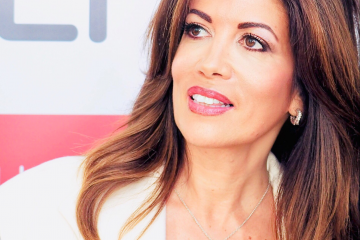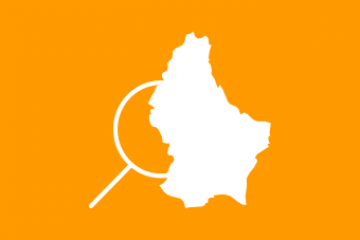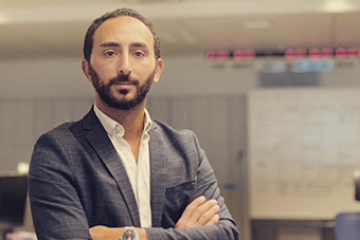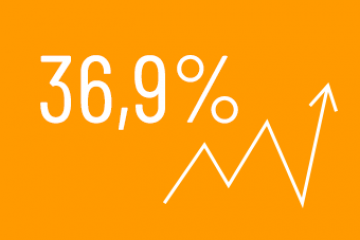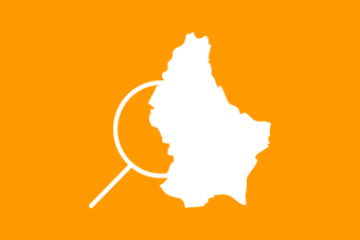ETFs and how they can fit in a life insurance portfolio
Q1. What is an ETF?
An Exchange Traded Fund (or ‘ETF’) is a unit trust or mutual fund. Its objective is to replicate, as closely as possible (both upwards and downwards) and at a lower cost, the performance of its benchmark index. For example, if the CAC 40 index returns 2% during a given day, then the objective of the CAC 40 ETF is also to return 2% during this day, after deducting management fees.
ETFs offer the opportunity to invest in all asset classes: equities, bonds, commodities and risk management strategies. They are bought as simply as shares, through your bank or your usual wealth management advisor.
Q2. Why is demand for ETFs growing among retail investors?
ETFs were created in the 1990s and have grown exponentially since then. The ETF market in the United States is much more mature than in Europe. It was thus opened up earlier to retail investors, who now hold about 50% of the outstanding amounts.
Europe has great catching-up potential and is now registering strong acceleration in growth. Indeed, the context is particularly favourable for their development via financial distributors such as wealth management advisers, private banks, on-line banks and brokers or robot advisers.
This success is explained by the fact that they are simple, transparent, and low-cost savings tools (weighted average of 0.23%, source Morningstar, December 2018).
Today, we understand that investors are looking for two things:
- a simple and transparent way to access many asset classes in the face of declining returns on secure investments;
- to be able to do so at a lower cost thanks to lower management fees compared with traditional investment vehicles.
Regulatory developments in Europe, including greater transparency of the cost of savings management, are also very favourable to the development of ETFs.
Q3. What are the characteristics of ETFs which make them simple savings tools?
ETFs make it possible to invest at a lower cost in markets which are regularly mentioned in the news: the CAC 40, European equities, NASDAQ, China, etc. These are transparent instruments: you know exactly what you are exposed to, and at what price.
There are, even today, ETFs which meet the ESG (Social Environment and Governance) criteria.
Q4. Is the active/passive debate outdated?
The performance of ETFs is much in demand by investors. They are able to match or even exceed the performance of a number of funds. The study conducted by Lyxor ETF Research on a universe of more than 7,000 active funds reveals, for example, that over a 10-year period, only 29% of active US equity funds managed to outperform their benchmark index (at the end of June 2019). However, we believe that there is complementarity between active and passive management, and combining the two types of management can optimise portfolio construction.
Q5. How does the ETF landscape in Europe look today
Historically in Europe, ETFs have been used by sophisticated investors who were interested in their savings. They bought index trackers to replicate the performance of an index, or conversely, to hedge themselves in the event of a market downturn. These ETFs were often used for short-term strategies.
Today, thanks to their low fees, ETFs have become more like financial savings products with medium/long term horizons than just short-term stock market products. The longer the holding period, the more the reduction in investment vehicle costs can have a positive impact on investment.
Savings in Europe, particularly in France, are now largely intended to finance retirement and are primarily directed towards secure investments. However, we could be in a period of transition because, with the decline in interest rates, returns on secure investments are very low. Europeans will probably take more control of their savings to finance their retirement. And in this situation, ETFs have many advantages.
Q6. Can you allocate assets and build a portfolio with ETFs?
ETFs cover all asset classes: equities, bonds, commodities, but also ESG. ETFs are very easily accessible within the different savings wrappers, whatever the country.
The individual investor can adapt his allocation to his savings plan, his risk profile and his life project, with more or less aggressive or defensive ETF allocations. He can delegate this to an asset management company, for example via piloted management. But he can also choose his own ETFs, and build the allocation of his choice which corresponds to his own objectives. For example, he may choose to buy ETFs which offer exposure to Germany or India, or to particular sectors such as the automotive or consumer goods industries. He can use all the ingredients he wants in order to make his own recipe. And to realise his own convictions.
Q7. What are the risks of investing in ETFs?
There are two main types of risk. First, risks relating to the management objective. The ETF replicates an index, so it will not outperform this index. However, it is rare to find active managers capable of doing better. Second, the ETF carries the same level of risk as a traditional UCITS, because it has the same constraints (exchange rate risk, market risk, etc.).
An ETF (Exchange Traded Fund) is a unit trust or mutual fund whose objective is to replicate the performance of its benchmark index, both upwards and downwards, as faithfully as possible and at the lowest possible cost. They invest in all asset classes. ETFs are therefore very easily accessible within a Luxembourg life insurance contract depending on the risk profile of the subscriber.



















